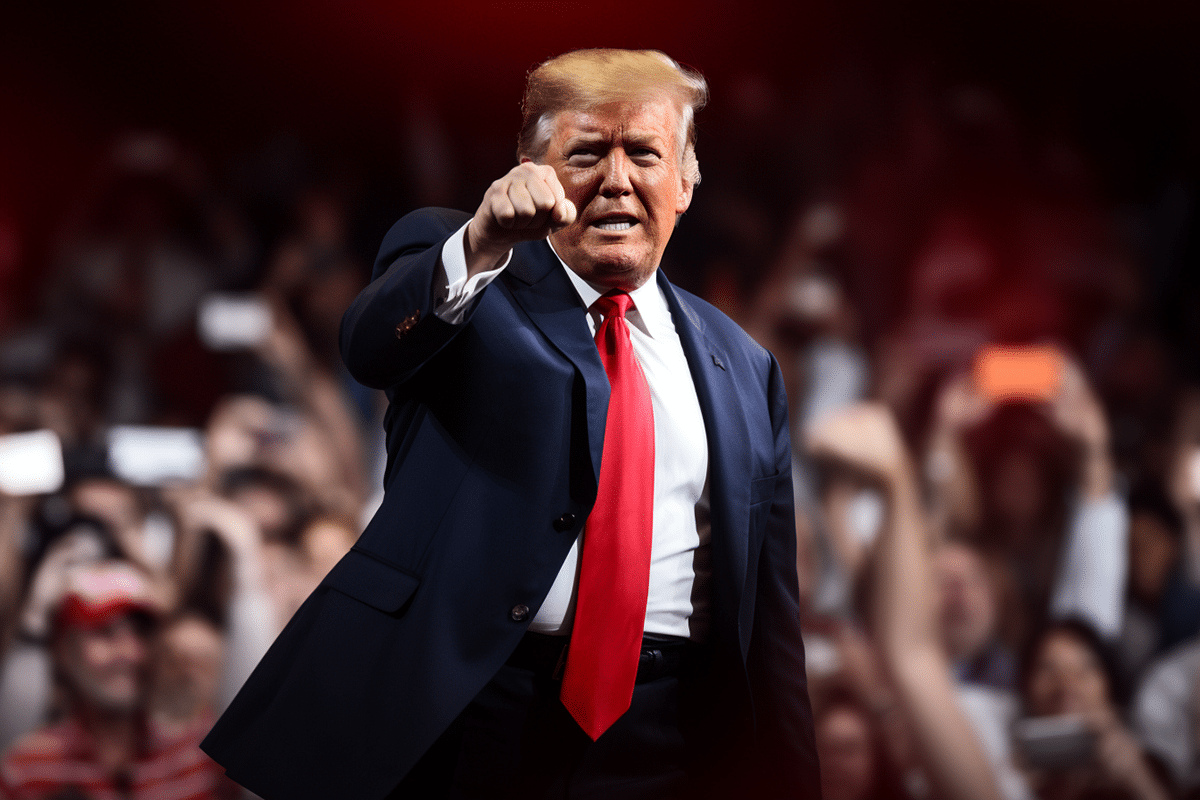Donald Trump, former president and 2024 presidential candidate, has announced plans to impose sweeping tariffs that would mark the most significant trade policy shift in nearly a century. His proposal targets every U.S. trade partner with universal tariffs ranging from 10% to 20%, with specific goods from China facing levies of up to 60%. In certain cases, tariffs could climb as high as 100%, 200%, or even 1,000%, signaling a dramatic move toward economic isolation. The proposed policies are intended to promote domestic production but come with serious economic risks.
These tariffs would raise prices on essential imports, including food, electronics, and pharmaceuticals, which could particularly affect low-income Americans. The U.S. economy, deeply intertwined with global trade networks, would experience disruptions in supply chains, higher consumer prices, and increased costs for domestic businesses reliant on foreign imports. Analysts estimate the average household could face annual expenses of between $2,600 and $7,600 due to the new tariffs, with low-income households hit the hardest, paying up to 6% more of their income on essentials.
Stock markets are also likely to feel the impact. A 10% universal tariff could trigger a market contraction of similar magnitude, with auto manufacturers such as General Motors and Ford expected to suffer substantial earnings declines. The broader economic ripple effect could reduce growth and create inflationary pressure, resulting in higher mortgage rates for consumers. Economists warn that the combination of slower growth and rising prices could lead to a scenario of stagflation, with limited job creation and weak economic performance.
The plan aims to incentivize companies to move jobs and production back to the United States by imposing high tariffs on imported goods. However, this shift would require time and significant investments, creating immediate challenges for industries that rely heavily on imports. U.S. manufacturers would face declining orders from foreign buyers as other countries impose retaliatory tariffs, further limiting export opportunities. In past trade conflicts, the European Union targeted U.S. agricultural products and iconic brands like Harley-Davidson, and a similar response is expected if the new tariffs are enacted.
Countries such as Canada, China, and members of the European Union are already preparing contingency plans. Some may restrict U.S. access to critical resources like steel, aluminum, and lumber or reduce imports of American goods, including aircraft and agricultural products. These measures could further squeeze U.S. businesses and exacerbate disruptions to the global economy. China, in particular, could reduce agricultural imports, which previously led to multi-billion-dollar bailouts for American farmers during Trump’s first term.
The tariffs would also strain U.S. compliance with international trade agreements. Implementing a universal tariff would likely violate World Trade Organization rules, prompting legal challenges from trade partners. However, international litigation can take years, meaning affected countries are expected to retaliate immediately.
The impact of these tariffs would be far-reaching. The United States imports over $1 trillion in goods annually, much of which is essential to consumers. Economists project that a 20% tariff on imports could amount to a $4 trillion tax increase over the next decade. Gas prices, especially in regions like the Midwest that rely on Canadian oil, could rise by as much as 75 cents per gallon. Efforts to develop domestic alternatives for many imported products would take years, causing supply shortages and price hikes in the interim.
Additionally, as U.S. trade slows, countries like China and European nations may reduce purchases of U.S. Treasury bonds. This could drive up long-term interest rates, further straining consumer spending with higher borrowing costs. Trump’s proposal to devalue the dollar to boost exports would also likely fail, as global tariffs tend to strengthen currency values, pushing the dollar higher.
Despite these risks, Trump remains confident that tariffs are the best tool to rebuild U.S. manufacturing and promote economic growth. His campaign emphasizes that tariffs would bring back jobs lost to globalization and strengthen American industry. A recent poll found that a majority of registered voters, including 56% of independents, support the idea of universal tariffs and higher tariffs on Chinese goods.
As the world prepares for a potential new trade war, businesses and governments are weighing their options. Retaliatory measures from other countries could take many forms, including targeting key U.S. industries. The economic uncertainty is already prompting businesses to assess their supply chains, bracing for a scenario that could redefine the global trade landscape for years to come.




